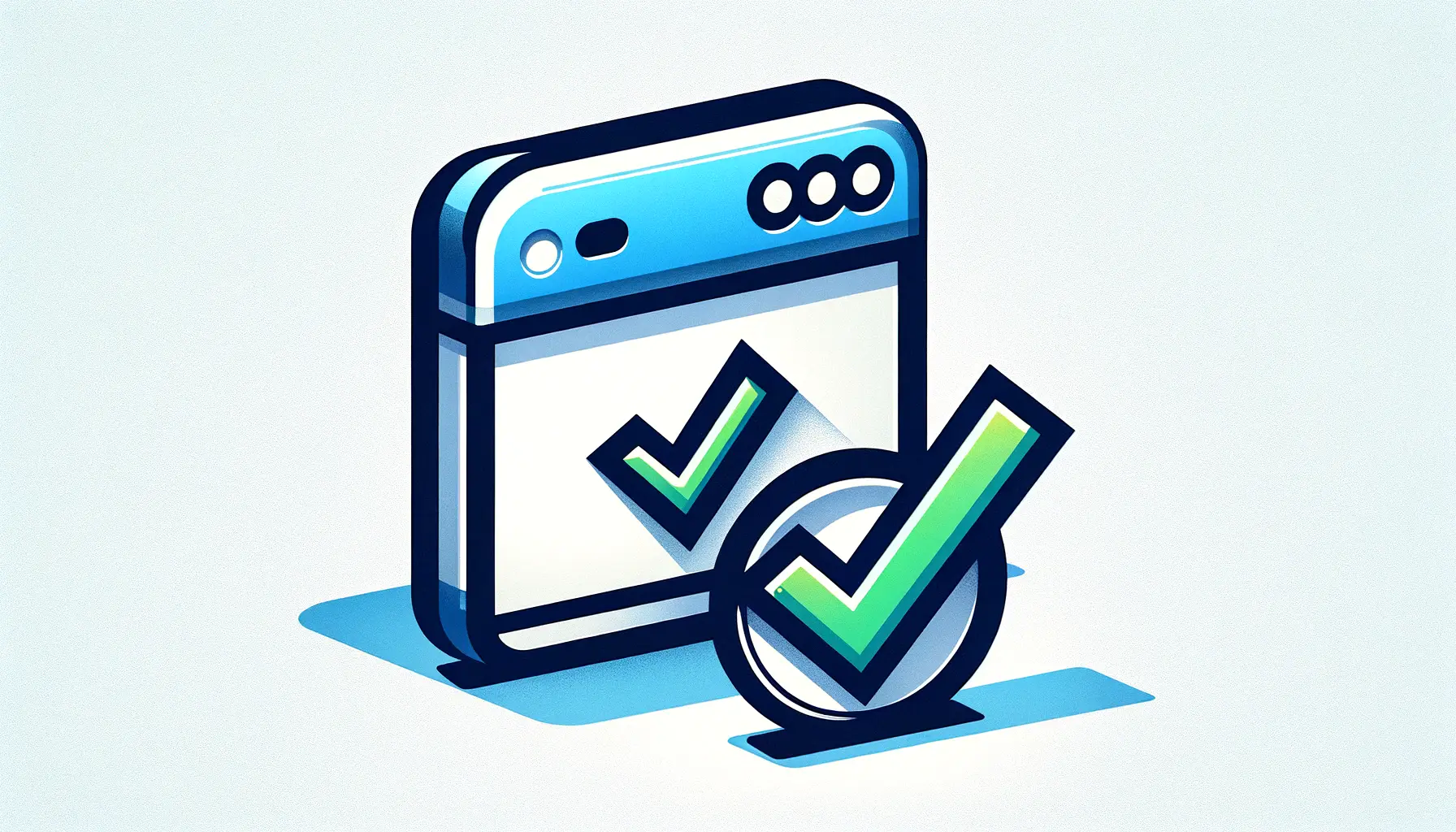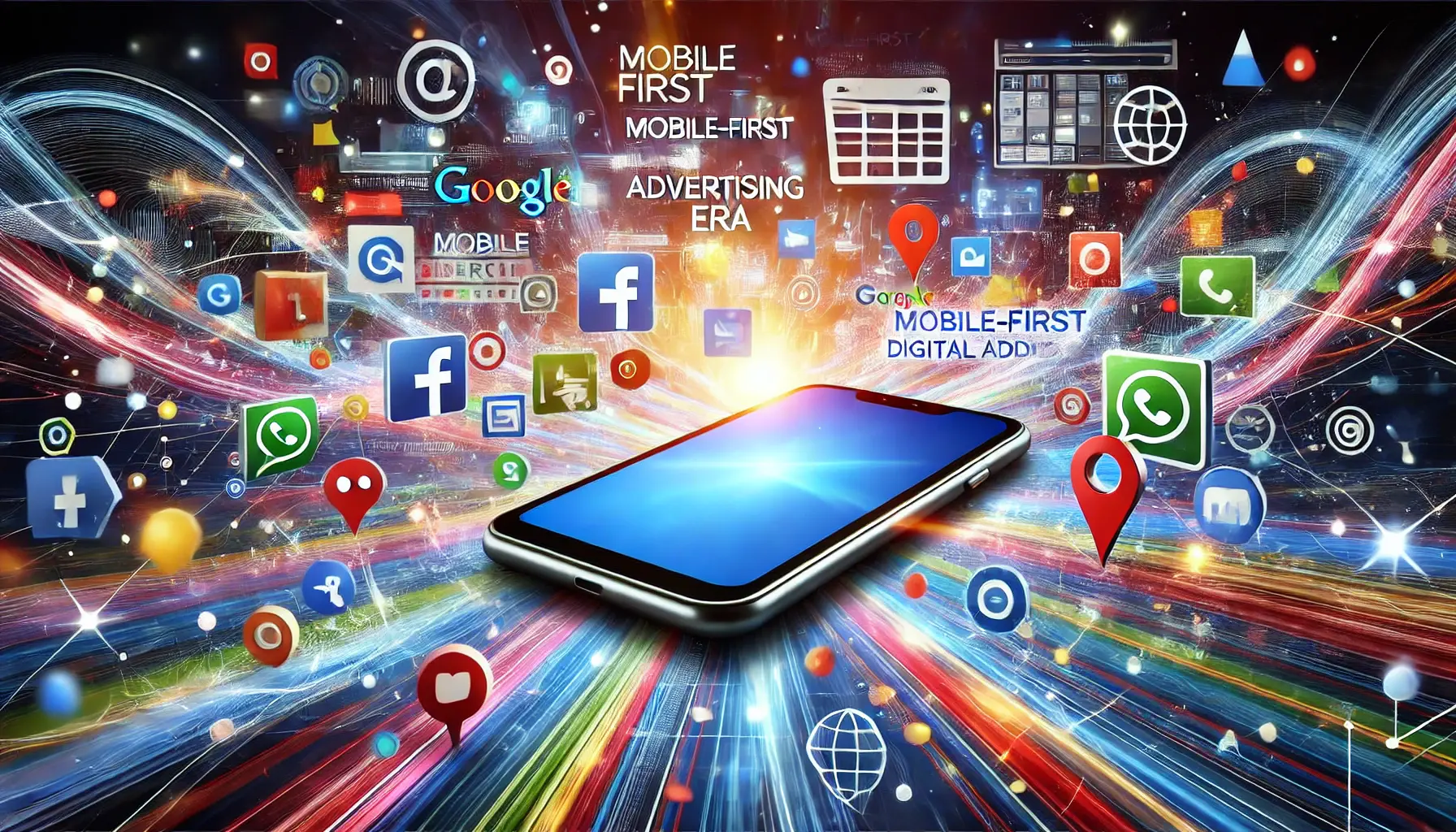In today’s rapidly evolving digital landscape, mobile accessibility has transcended beyond a mere convenience to become a fundamental aspect of technology inclusion.
With over 5 billion mobile users worldwide, the imperative for accessible mobile applications and websites is more pronounced than ever.
Mobile accessibility ensures that everyone, including people with disabilities, can seamlessly interact with mobile content, thereby fostering an inclusive digital environment.
This not only enhances user experience but also aligns with legal and ethical standards, making it a pivotal focus for developers and businesses alike.
The significance of mobile accessibility is underscored by the diverse needs of users.
Individuals with visual, auditory, motor, or cognitive disabilities encounter various challenges when navigating non-accessible mobile interfaces.
By implementing accessibility principles, developers can create more usable and universally accessible products.
This not only broadens the user base but also demonstrates a commitment to equality and inclusivity in the digital realm.
As mobile internet usage continues to surge, ensuring accessibility is not just a good practice but a necessity for reaching all corners of the global audience.
- The Evolution of Mobile Accessibility
- Understanding User Needs and Challenges
- Legal Frameworks and Compliance
- Designing for Accessibility
- Technological Innovations Enhancing Accessibility
- Best Practices for Mobile Accessibility Testing
- Accessibility and User Experience: A Unified Approach
- Embracing Mobile Accessibility: Towards an Inclusive Digital Future
- Mobile Accessibility FAQs
The Evolution of Mobile Accessibility
From Luxury to Necessity
There was a time when mobile accessibility was considered a luxury, an additional feature that developers might consider after the main product was developed.
However, this perspective has shifted dramatically.
Mobile devices are now integral to daily life, serving as essential tools for communication, education, employment, and entertainment.
This evolution from luxury to necessity has made accessibility a core component of mobile development.
It’s not just about creating apps and websites that are easy to use; it’s about ensuring that everyone can use them, regardless of their physical or cognitive abilities.
The push towards mobile accessibility has been partly driven by legal requirements, with various countries implementing regulations to ensure digital content is accessible to all users.
However, beyond compliance, there’s a growing recognition of the ethical obligation to include all users in the digital landscape.
This shift reflects a broader societal move towards inclusivity and equality, with technology playing a key role in facilitating this change.
Technological Advances and Accessibility
Technological advancements have significantly contributed to the enhancement of mobile accessibility.
Features like screen readers, voice recognition, and adjustable display settings are now common in many devices, making them more accessible to users with disabilities.
Developers have access to a range of tools and guidelines, such as the Web Content Accessibility Guidelines (WCAG), to help create accessible mobile applications and websites.
These resources provide a framework for addressing the various aspects of accessibility, from visual design to interactive elements.
Moreover, the rise of artificial intelligence and machine learning offers new possibilities for improving mobile accessibility.
These technologies can be used to develop more intuitive interfaces and personalized user experiences, further reducing barriers for users with disabilities.
As these technologies continue to evolve, they present an opportunity to redefine what’s possible in the realm of mobile accessibility, making digital content more accessible and enjoyable for all users.
Mobile accessibility is not just a technical requirement; it’s a reflection of a broader commitment to creating an inclusive digital world where everyone can participate fully and equally.
Understanding User Needs and Challenges
At the heart of mobile accessibility lies a deep understanding of user needs and the challenges they face.
Users with disabilities encounter a variety of obstacles that can hinder their ability to interact with mobile content effectively.
Recognizing these challenges is the first step towards creating solutions that enhance accessibility and usability for everyone.
By addressing the specific needs of users with disabilities, developers can ensure their applications and websites are not only compliant with accessibility standards but also genuinely user-friendly.
Common Accessibility Barriers
Users with disabilities often face several common barriers when using mobile devices:
- Visual Impairments: Difficulty reading text due to small font sizes, poor color contrast, or non-descriptive images and icons.
- Auditory Impairments: Challenges in accessing audio content without captions or sign language interpretations.
- Mobility Impairments: Trouble interacting with touchscreens, small buttons, or complex gestures required by the app or website.
- Cognitive Impairments: Navigational difficulties arising from complex layouts, inconsistent design patterns, or lack of clear instructions.
Strategies for Enhancing Accessibility
To overcome these barriers, developers can employ a variety of strategies:
- Adaptive Text Features: Implementing adjustable text sizes and contrast options to accommodate users with visual impairments.
- Audio Alternatives: Providing text transcripts and captions for audio and video content to aid users with hearing impairments.
- Simplified Navigation: Designing intuitive and consistent navigation that minimizes the need for complex gestures, benefiting users with mobility challenges.
- Clear and Concise Content: Using straightforward language and providing clear instructions to assist users with cognitive impairments.
Incorporating these strategies into mobile development not only improves accessibility but also enhances the overall user experience, making digital content more enjoyable and easier to use for everyone.
Understanding the diverse needs and challenges faced by users with disabilities is crucial for developing accessible mobile content.
By prioritizing these considerations, developers can create more inclusive digital environments that cater to the needs of all users, regardless of their abilities.
This approach not only ensures compliance with accessibility standards but also reflects a commitment to equality and inclusivity in the digital age.
Legal Frameworks and Compliance
The importance of mobile accessibility is further underscored by the legal frameworks established to protect the rights of individuals with disabilities.
Around the world, various laws and regulations mandate the accessibility of digital content, ensuring that mobile applications and websites are accessible to all users.
Compliance with these legal requirements is not only a matter of following the law but also demonstrates a commitment to inclusivity and social responsibility.
In the United States, the Americans with Disabilities Act (ADA) and Section 508 of the Rehabilitation Act are two key pieces of legislation that require public and private entities to make their digital offerings accessible.
Similarly, in Europe, the European Accessibility Act (EAA) seeks to harmonize accessibility standards across EU member states, covering a wide range of products and services, including mobile applications and websites.
These legal frameworks highlight the global consensus on the importance of digital accessibility and the need for developers to ensure their products meet these standards.
Key Components of Accessibility Compliance
To comply with these legal requirements, developers should focus on several key components of accessibility:
- Perceivability: Information and user interface components must be presentable to users in ways they can perceive. This includes providing text alternatives for non-text content and ensuring that audio and video content is accessible.
- Operability: User interface components and navigation must be operable. This means that all users should be able to interact with the interface, regardless of how they access the content (e.g., using a mouse, keyboard, voice commands, or assistive technologies).
- Understandability: Information and the operation of the user interface must be understandable. This involves making text readable and predictable and providing input assistance to help users avoid and correct mistakes.
- Robustness: Content must be robust enough to be interpreted reliably by a wide variety of user agents, including assistive technologies. This means ensuring compatibility with current and future tools used by people with disabilities.
Failing to comply with accessibility laws can result in legal consequences, including lawsuits and financial penalties. More importantly, non-compliance can alienate a significant portion of the population, damaging a brand’s reputation and trustworthiness.
Legal frameworks and compliance standards play a crucial role in promoting mobile accessibility.
By adhering to these guidelines, developers not only avoid legal repercussions but also contribute to a more inclusive and equitable digital world.
As mobile technology continues to evolve, staying informed about and compliant with accessibility laws remains a top priority for businesses and developers alike.
Designing for Accessibility
Designing for mobile accessibility involves more than just adhering to technical standards; it requires a shift in mindset towards inclusivity and user-centric design.
By integrating accessibility considerations from the outset, developers and designers can create mobile applications and websites that cater to a broader audience, including users with disabilities.
This approach not only enhances the user experience for all but also aligns with ethical principles and legal obligations.
Accessible design is not a one-size-fits-all solution but rather a set of principles that can be adapted to meet the diverse needs of users.
It encompasses a wide range of practices, from the use of color and typography to the organization of content and the implementation of navigational aids.
By focusing on these elements, designers can ensure that their mobile products are not only functional but also welcoming and easy to use for everyone.
Principles of Accessible Design
To achieve effective mobile accessibility through design, consider the following principles:
- Flexible User Interface: Create a user interface that can be easily adjusted to meet the needs of users with various disabilities. This includes offering options to change text sizes, contrast settings, and more.
- Intuitive Navigation: Ensure that navigation is logical, predictable, and easy to use. This can be achieved by using clear labels, consistent layouts, and providing multiple ways to navigate content.
- Meaningful Feedback: Provide immediate and clear feedback for user actions. This helps users understand the results of their interactions and how to proceed.
- Alternative Access Methods: Support alternative methods of interaction, such as voice commands or external assistive devices, to accommodate users with different types of impairments.
Implementing Accessible Design Practices
Implementing these design principles requires a collaborative effort across the entire development team.
Designers, developers, and content creators must work together to ensure that accessibility is considered at every stage of the development process.
This includes:
- Conducting user research to understand the needs and preferences of users with disabilities.
- Testing designs with real users and incorporating their feedback.
- Using semantic HTML and ARIA (Accessible Rich Internet Applications) landmarks to enhance the accessibility of web content.
- Ensuring that all interactive elements are keyboard accessible and that touch targets are large enough to be easily activated.
Accessible design is not just about compliance; it’s about creating a positive and inclusive user experience that values diversity and promotes equality.
By embracing these principles and practices, designers and developers can create mobile applications and websites that are not only legally compliant but also genuinely accessible and enjoyable for all users.
Designing for accessibility is an ongoing process that requires continuous learning, testing, and iteration to meet the evolving needs of users and technology.
Technological Innovations Enhancing Accessibility
The landscape of mobile accessibility is continually evolving, driven by technological innovations that promise to make digital content more accessible than ever before.
These advancements are not just enhancing the user experience for individuals with disabilities; they’re reshaping the way developers and designers think about and implement accessibility in mobile applications and websites.
From artificial intelligence (AI) to voice recognition technologies, the potential to create more inclusive digital environments is expanding rapidly.
Embracing these technologies can significantly reduce barriers for users with disabilities, offering them new ways to interact with mobile content.
By integrating innovative solutions into mobile design and development, businesses can not only comply with accessibility standards but also lead the way in creating a more inclusive digital world.
AI and Machine Learning
AI and machine learning are at the forefront of technological innovations improving mobile accessibility.
These technologies can personalize the user experience by learning from individual user interactions and preferences.
For example, AI can automatically adjust text size, contrast, and navigation based on the user’s needs, making mobile applications and websites more accessible without requiring manual adjustments.
Furthermore, machine learning algorithms can predict and correct accessibility issues in real-time, ensuring a smoother experience for users with disabilities.
Voice Recognition and Control
Voice recognition technology has become a game-changer for mobile accessibility, enabling users to control their devices and access content through voice commands.
This is particularly beneficial for users with physical or motor impairments who may find it challenging to use traditional touch interfaces.
Voice-activated assistants can perform a wide range of tasks, from navigating through apps to reading text aloud and even transcribing spoken words into text, breaking down barriers and making mobile content more accessible.
Augmented Reality (AR) and Virtual Reality (VR)
AR and VR technologies are beginning to play a role in enhancing mobile accessibility by creating immersive and interactive experiences that can be tailored to the needs of users with disabilities.
For instance, AR can overlay text descriptions on real-world objects for users with visual impairments, while VR can simulate environments for users to navigate and interact with in a controlled, accessible manner.
These technologies offer exciting possibilities for creating more engaging and accessible mobile experiences.
Technological innovations are key to advancing mobile accessibility, offering new opportunities to make digital content more inclusive and user-friendly for everyone.
As these technologies continue to develop, they offer the promise of making mobile accessibility more intuitive and seamless.
By leveraging AI, voice recognition, AR, and VR, developers and designers can create mobile applications and websites that are not only accessible but also more engaging and personalized for users with disabilities.
The future of mobile accessibility lies in the integration of these innovative technologies, paving the way for a more inclusive digital landscape.
Best Practices for Mobile Accessibility Testing
Ensuring mobile applications and websites are accessible requires thorough testing against established accessibility standards.
Mobile accessibility testing is a critical step in the development process, identifying potential barriers for users with disabilities and verifying compliance with accessibility guidelines.
Adopting best practices for mobile accessibility testing not only helps in creating more inclusive digital products but also enhances the overall user experience for a wider audience.
Effective mobile accessibility testing involves a combination of automated tools, manual testing, and user feedback.
This multi-faceted approach ensures a comprehensive evaluation of mobile applications and websites from various perspectives, ultimately leading to more accessible and user-friendly digital content.
Automated Testing Tools
Automated testing tools can quickly identify common accessibility issues in mobile applications and websites.
While these tools are efficient and can cover a wide range of technical checks, they cannot capture all aspects of user experience, especially those related to subjective user needs.
Some popular automated testing tools include:
- WAVE (Web Accessibility Evaluation Tool)
- AXE Accessibility
- Google Lighthouse
Manual Testing and Expert Review
Manual testing, conducted by accessibility experts, is essential for identifying issues that automated tools might miss.
This includes evaluating the logical flow of content, the ease of navigation, and the overall user experience from the perspective of users with disabilities.
Key aspects of manual testing include:
- Keyboard accessibility testing
- Screen reader compatibility
- Color contrast and text resizing
User Testing with People with Disabilities
Involving real users with disabilities in the testing process provides invaluable insights into the usability of mobile applications and websites.
User testing helps identify practical challenges and preferences that might not be apparent through automated or manual testing alone.
Strategies for effective user testing include:
- Recruiting a diverse group of testers with various disabilities
- Conducting structured testing sessions to gather feedback on specific features or tasks
- Implementing changes based on user feedback and conducting follow-up tests to verify improvements
Remember, mobile accessibility testing is an ongoing process. Digital products evolve, and so do accessibility standards and user expectations. Regular testing and updates are necessary to maintain and improve accessibility over time.
By incorporating these best practices into the development lifecycle, businesses and developers can ensure their mobile applications and websites are accessible to all users, including those with disabilities.
This not only complies with legal requirements but also demonstrates a commitment to inclusivity, enhancing brand reputation and customer loyalty in the process.
Accessibility and User Experience: A Unified Approach
Integrating accessibility into the mobile user experience (UX) design is not merely about removing barriers for users with disabilities; it’s about enhancing the overall usability and satisfaction for all users.
A unified approach to accessibility and UX design recognizes that features improving accessibility often enhance the user experience for everyone.
This perspective shifts accessibility from being viewed as an add-on or compliance requirement to being an integral part of the design process that contributes to the success of mobile applications and websites.
Creating a seamless integration of accessibility and UX requires a deep understanding of user needs, a commitment to inclusive design principles, and a willingness to innovate.
By prioritizing accessibility as a core component of UX design, developers and designers can create more engaging, usable, and inclusive digital products.
Inclusive Design Principles
Inclusive design principles guide the development of mobile applications and websites that are accessible and enjoyable for a broad audience, including people with disabilities.
These principles include:
- Equitable Use: Designing features that are useful and marketable to people with diverse abilities.
- Flexibility in Use: Accommodating a wide range of individual preferences and abilities.
- Simple and Intuitive: Ensuring ease of use regardless of the user’s experience, knowledge, language skills, or current concentration level.
- Perceptible Information: Communicating necessary information effectively to the user, regardless of ambient conditions or the user’s sensory abilities.
Enhancing UX Through Accessibility
Integrating accessibility into UX design enhances the user experience in several ways:
- Improved Navigation: Accessible design promotes clearer and more intuitive navigation, making it easier for all users to find what they need.
- Increased Usability: Features such as text resizing, high contrast modes, and voice control improve usability for users with and without disabilities.
- Better Content Clarity: Accessible design principles encourage the creation of content that is easy to read and understand, benefiting all users.
- Wider Reach: By catering to the needs of users with disabilities, mobile applications and websites can reach a larger audience, increasing engagement and satisfaction.
Adopting a unified approach to accessibility and UX design not only fulfills ethical and legal obligations but also drives innovation, leading to the creation of digital products that stand out in the competitive mobile landscape.
Ultimately, the goal of integrating accessibility with user experience design is to create mobile applications and websites that are not just accessible but also delightful to use for everyone.
This approach not only benefits users with disabilities but also enhances the overall quality and appeal of digital products, contributing to a more inclusive and equitable digital world.
Embracing Mobile Accessibility: Towards an Inclusive Digital Future
The journey towards creating fully accessible mobile applications and websites is both a challenge and an opportunity for developers, designers, and businesses alike.
As we have explored, mobile accessibility is not just a compliance requirement but a crucial aspect of inclusive design that benefits all users.
By embracing accessibility principles, we can ensure that our digital products are usable and enjoyable for everyone, including those with disabilities.
This commitment to inclusivity not only enhances user experience but also broadens our audience reach, ultimately contributing to a more equitable digital world.
The Path Forward
As technology continues to evolve, so too will the standards and practices for mobile accessibility.
Staying informed about the latest developments and integrating accessibility into the design process from the outset are key steps towards achieving a truly inclusive digital landscape.
The path forward involves:
- Continuously testing and refining mobile applications and websites to meet and exceed accessibility standards.
- Engaging with users with disabilities to gain insights into their experiences and needs.
- Leveraging technological innovations to enhance accessibility features and functionalities.
- Adopting a unified approach to accessibility and user experience design to create more engaging and usable digital products.
Conclusion
In conclusion, the importance of mobile accessibility in today’s digital age cannot be overstated.
As we strive to create digital environments that are accessible to all, we must remember that accessibility is an ongoing journey, not a destination.
By prioritizing mobile accessibility, we not only comply with legal requirements but also embrace the values of diversity, equity, and inclusion.
Let us continue to innovate and push the boundaries of what is possible, ensuring that our digital future is accessible and inclusive for everyone.
Quality web design is key for a great website! Check out our service page to partner with an expert web design agency.
Mobile Accessibility FAQs
Explore common questions about making mobile experiences accessible and inclusive for all users.
Mobile accessibility ensures websites and apps are usable for people with disabilities on mobile devices.
It allows all users, including those with disabilities, to access mobile digital content, enhancing inclusivity.
Follow WCAG guidelines, use semantic HTML, and test with real users with disabilities to improve accessibility.
Barriers include small touch targets, poor contrast, lack of alt text for images, and non-linear navigation.
Voice recognition allows users with physical impairments to navigate and interact with mobile content verbally.
Yes, AI can personalize user experiences and predict accessibility needs, making apps more user-friendly for everyone.
AR can provide visual aids and contextual information to users with visual impairments, enhancing their mobile experience.
Yes, laws like the ADA and WCAG guidelines mandate that mobile apps and websites must be accessible to all users.












